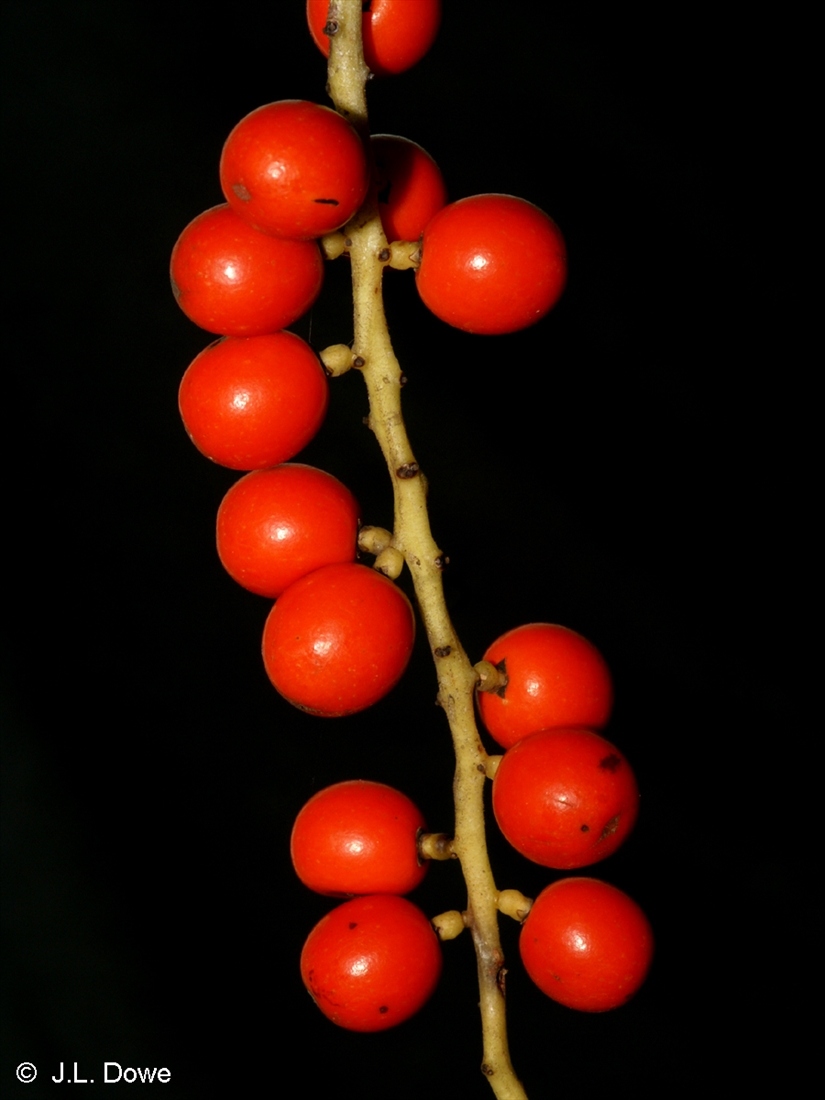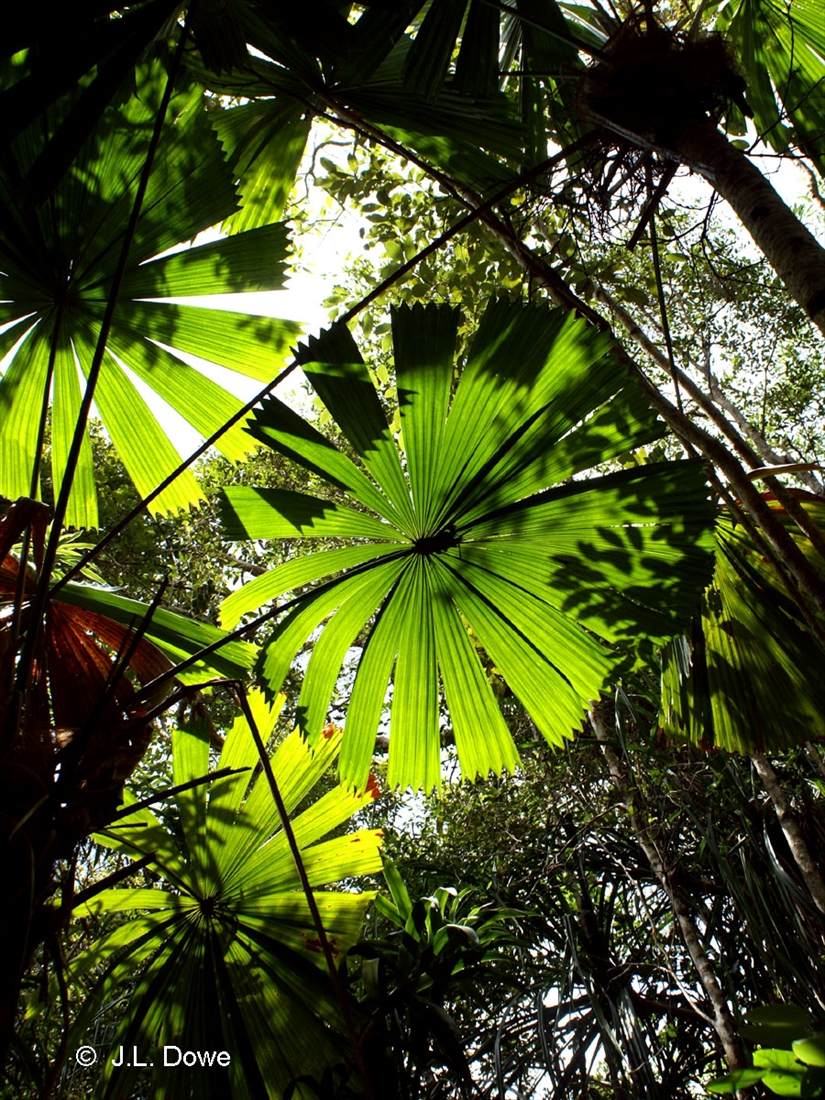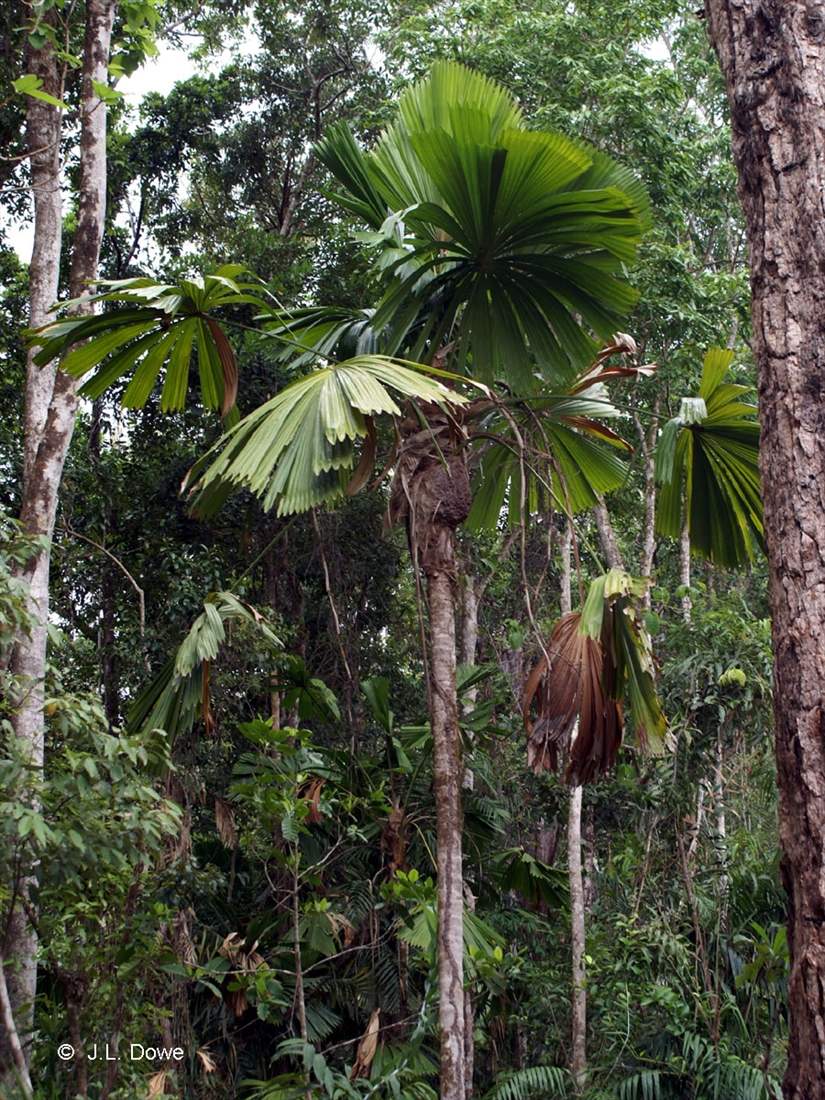Australian Tropical Rainforest Plants - Online edition
Licuala ramsayi var. tuckeri Barfod & Dowe





Barfod, A.S. & Dowe, J.L. (2005) Palms 49(1): 21-22. Type: Australia. Queensland. Cape York Peninsula, Lockerbie Scrub, south of Pajinka Wilderness Lodge, 29 Sept. 1999, J.L.Dowe 602 & A.S.Barfod (Holotype BRI; isotype AAU).
Fan Palm
Solitary palm tree. Stem up to 10 m tall and 7-10 cm in DBH.
Crown with 9-12 erect to semi-drooping leaves; leaf sheath up to 100 cm long, and disintegrating into a light to dark brown persistent fibrous mesh. Petiole up to 2 m long, basal part 1.2-1.8 cm in diam., abaxial side from slightly ridged or furrowed basally to flat below the blade, lower part armed with up to 5 mm long, mixed long and short, straight to recurved spines; lamina broadly elliptic to almost circular, glabrous, chartaceous, maximum diam. 1.2-1.8 m in diam., divided into 17-23 segments; the distal 1-3 segments inserted on a rather thick and conspicuous extension of costa, mid segment 7-23 costate, 60-80 cm long, 20-40 cm wide, apex truncate, lateral segments 2-5 costate, 50-75 cm long, 8-18 cm wide, apex truncate, basal segments 2-5 costate, 50-65 cm long, 5-10 cm wide, apex obliquely truncate; indentations mixed long and short, those leading to the adaxial folds 1-5 cm long, those leading to the abaxial folds about 0.5 cm long.
Inflorescences usually several on one palm, 2.0-3.5 m long, arcuate, prophyll 20-30 cm long, green at the base to brown and chartaceous distally, length of peduncle plus first subtending bract 50-70 cm, rachis with 8-10 nodes, subtending bracts tubular, up to 30 cm long, decreasing in size towards the apex, glabrous or with scattered ramenta, first order branches to 25-55 cm long, decreasing in length towards the apex, the proximal ones bearing 15-50, glabrous to sparsely pubescent, 15-30 cm long rachillae. Flowers mostly solitary, subsessile to shortly pedicellate, subtending bract deltoid to strapshaped, up to 1 mm long, early deciduous; calyx 2.5-3.5 mm long, urn-shaped to cupulate, with three rounded to obtuse lobes, glabrous, cream with brown edges, receptacle and calyx fused for 0.3-0.5 mm; corolla cream colored, 3.3-3.5 mm long, glabrous, turning brown to black after anthesis; stamens 2.0-2.3 mm long, fused to corolla for 1.5-1.7 mm, staminal ring cream-colored at anthesis, truncate, filaments subulate, ca. 0.2 mm long, anthers 0.3-0.4 mm long, rounded to elliptic; ovary ca. 1 mm long, glabrous, turbinate, rounded to truncate apically, style 1.2-1.3 mm long, filiform.
Features not available.
Distinguished by the leaf segments united into +/- regular multiples; the leaf sheath which remains attached to the leaf; the petiole which is unarmed or with a few spines at the base of the petiole; and the flowers which are mostly solitary.





